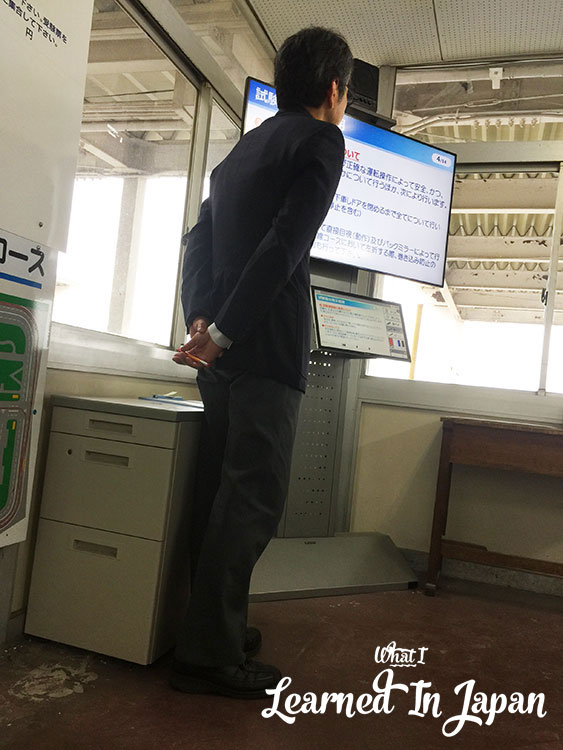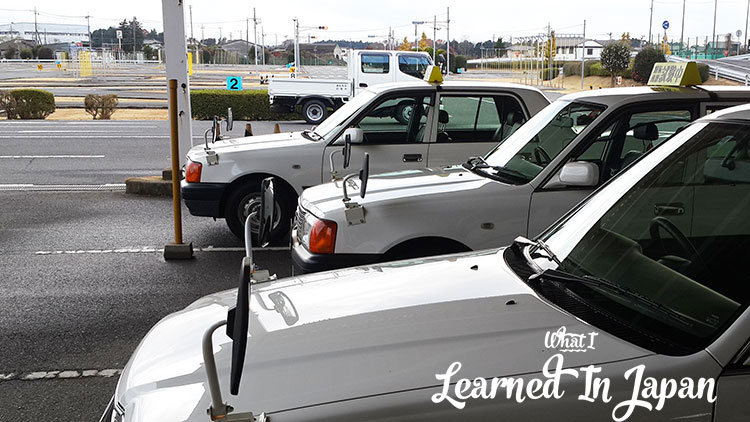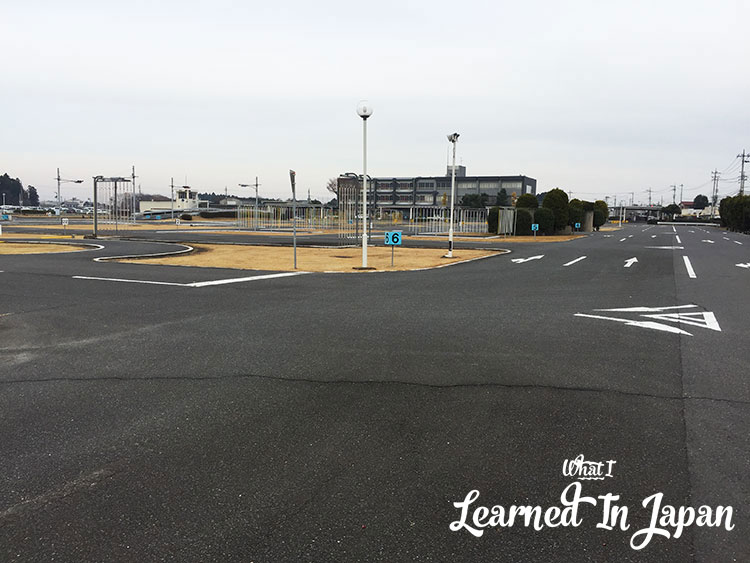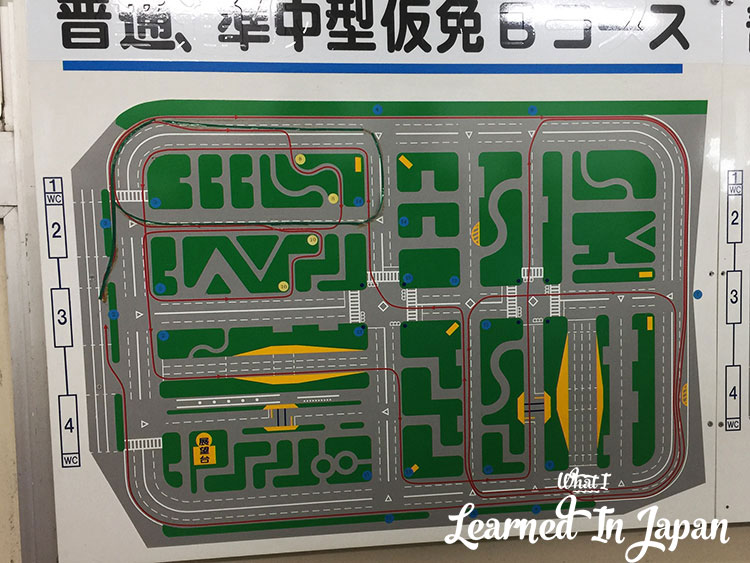This is part 2 of the “how to get a driver’s license in Japan” series.
To see part 1 that covers the process of getting a drivers license, go here: https://www.learnedinjapan.com/how-to-get-drivers-license/
This series covers the practical part of the driving test needed to acquire a driver’s license in Japan.
Table of Contents
The Practical Drive Test
To be honest, the practical driving test is not that difficult. Think of the practical exam as an opportunity to practice and learn. The driving test is usually less than 10 minutes. You just need to follow the signs and instructions from the proctor and know how to properly execute what you need to do.
Note: The proctors will clearly instruct you on how not to fail during the briefing session. It’s as if they don’t want you to fail! I’m seriously not joking! The only catch is that you will be briefed in Japanese!
Sometimes, the driving test actually makes me think that they are testing our Japanese language ability more than they are testing our actual driving ability. This is why I said in Part 1 that knowing your Japanese helps a lot.
If you understand most of what the proctor is saying your chances of failing are drastically reduced!
Again, the proctor will go over everything you need to do! I mean EVERYTHING you need to do to pass.

However, if you do fail, be optimistic and think of it as a practice session as the proctor will debrief you on what you did wrong in Japanese, so know your Japanese.
The Car You Will Drive
You will be be driving a well maintained sedan type of car called a Toyota Comfort. It is pretty much a Japanese taxi cab. These cars are of average size and easy to control.
Know that these cars may be very old so they may feel different from new cars.
When I drove one of these Toyota Comforts, the clutch was really heavy and the hand brake was weak. The power steering and everything else was tip top but I can’t speak for all cars as every car has their own personality.

For the test proctor to properly observe you, these cars are souped up with additional mirrors, sensor lights (clutch sensor, brake sensors, gas sensor, signal sensor) and an extra brake pedal for the proctor to stop you in case of imminent danger.
Some people complain that these cars are hard to control but it’s not the type of car but the driver that controls any kind of car.
Practical Drive Test not really based on skill. It’s mainly based on SAFETY.
This could seem irrational to most but your driving skills are not really looked upon during the test.
You can drive a stick and perform a heel-toe to smoothly downshift before a turn but none of that would matter at all.
The overall point of the driving exam is to show you are a very vigilant and a very careful driver who can follow the traffic ruls or what we call the “Japanese way of driving”.
In regards to skill, the only part of the driving course I actually thought tested driving skill was the crank and the S curve. All else was cake.
Just remember the main point is how you can drive according to the Japanese way and if you can drive safely without hurting or killing anyone.
Before getting in the car (Dress Code)
DO NOT wear sandals or heels. Wear footwear that is practical and comfortable i.e. shoes that cover your entire feet.
DO NOT wear anything that is baggy or too loose. For women, do not wear a long skirt. Just wear comfortable jeans.
Wear clothes that is practical for driving (clothes that cannot interfere with driving). A fitted shirt and a good pair of slacks is good enough.
If you want to make an impression, go in wearing business casual with a clean shave and a clean haircut.
Believe it or not, a girl was turned away because she was wearing heels right before getting in the car.
A guy was refused because he was wearing sandals. This same dude then offered to go barefoot but was turned away again and desperately asked anyone at the center if he can borrow shoes. It’s embarrassing.
Conduct yourself Like an Adult
Also, don’t put your hands in your pocket when you speak the to the instructor and look respectable and responsible. Don’t complain and don’t curse. All the cops know the F and S word. Those words are the funnest and easiest words to recognize from the English language.
The bottom line is to look clean, act professional, and be responsible. If you look and act like trash they will treat you and throw you like trash.
Before Getting in the Car (What to do)
- Walk around and check the car and bend over to check underneath both the front and rear of the car.
- Check tires.
- Check both ways before approaching the driver’s side of the car.
- Open the door.
- From the outside, adjust the seat towards the backside of the car.
- Sit in the car and adjust the seat accordingly making sure you can reach every pedal. If you are driving manual, make sure you can fully press on the clutch.
- Put your seat belt and make sure it locks with the click. Also make sure there are no twists on the belt.
- Tell everyone in the car to put their seat belt on even if they have it on already.
- Adjust the rear mirrors even if they don’t need to be adjusted.
- Check side mirrors and adjust if needed.
- Start the car!
The main point of the exam is to show you are a vigilant and very careful driver.
Before you Start to Roll
- Check the handbrake.
- Put your right foot on the foot brake
- If you’re driving stick, put your left foot on the clutch (both brake and clutch should be pressed)
- Turn on your turn signal (right signal)
- Release the hand brake.
- Put gear into drive or first gear if driving manual
- Look around the car starting from your 6 o’clock then turn your head clockwise to your 5 o’clock. Look means twist your body and exaggerate it!
- When absolutely clear, slowly depress the brake and roll slowly
- If you’re driving stick, slowly depress the clutch until you start to move and use the gas if needed.
- Keep your hands on the wheel at all times except when you are shifting gears.
The Driving Course
The driving course consists of a standard asphalt road, 4 wide curves, hill sections, an S-curve, a crank, a railroad crossing, and a parking area.
You may not have to do all these obstacles depending on how the proctor feels. Good luck!

In many cases, if you arrive early enough, you will be told which course you will drive on, see the course map, and be given the chance to walk the course.
Some may even be able to drive the course for practice.
For others who can’t, I suggest that you take a photo of the map and walk the course several times.
Cruise on to the next page to see the driving maps.



I remember while waiting to take my practical test, a translator for an actual test taker asked a question after the interpreter was not allowed to ride in the car during the practical test. The question to the proctor was, “how can he understand if I’m not with him?” The proctor bashed angrily at the translator by saying, “your client lives in Japan right? That person wants to drive in Japan right? Then he must be able to understand and communicate in simple Japanese at the very least.” The proctor then continued, “in the case he ever gets into an accident with someone or is pulled over by police he must be able to understand Japanese and be able to communicate on his own, because he is in Japan.”
I actually agreed with the proctor on this one because it’s “When in Rome”. You gotta play with their rules!